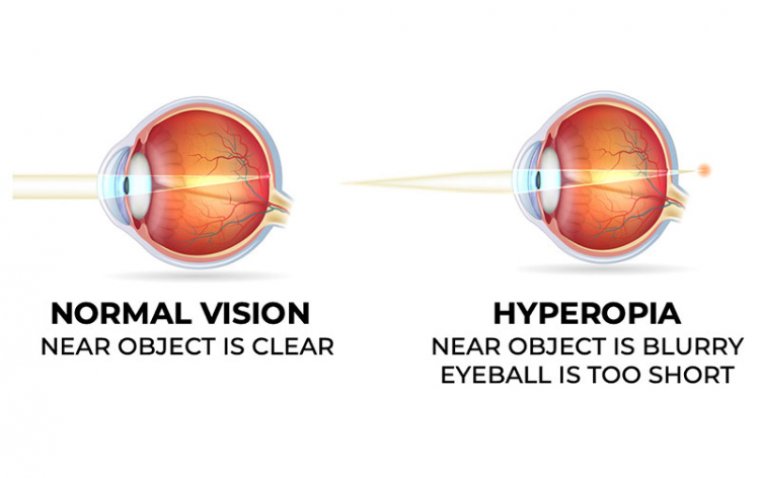
What You Need to Know About the Forever Chemicals in Your Contact Lenses
| Table of Content |
| Understanding PFAS and Their Properties |
| The Concern with PFAS in Contact Lenses |
| Environmental Impact of PFAS |
| Health Concerns Associated with PFAS |
| Conclusion |
Contact lenses have become a popular choice for vision correction, offering convenience and flexibility compared to traditional eyeglasses. However, recent studies have raised concerns about the presence of "forever chemicals" in soft contact lenses of popular brands, namely Alcon, Acuvue and CooperVision.
These chemicals, known as per- and polyfluoroalkyl substances (PFAS), have gained attention due to their persistence in the environment and potential health risks.
In this article, we will explore what you need to know about the forever chemicals in your contact lenses.
Understanding PFAS and Their Properties
Per- and polyfluoroalkyl substances (PFAS) are a group of synthetic chemicals widely used in various industries and consumer products due to their unique properties. These chemicals are resistant to heat, water, and oil, making them suitable for applications such as non-stick coatings, firefighting foams, and water-repellent fabrics.
PFAS Contact Lenses
Contact lenses infused with per- and polyfluoroalkyl substances (PFAS) have recently garnered attention due to a study revealing their potentially concerning properties. This research, conducted by Mamavation and Environmental Health News, examined 18 sets of popular soft contact lenses, including well-known brands like Acuvue, Alcon, and CooperVision. The study found indications of PFAS, known as "forever chemicals," in all tested contact lens products. These PFAS are pollutants that do not naturally degrade and can persist in the environment for years.
The lenses exhibited varying levels of organic fluorine, a marker for PFAS, with some containing over 4,000 parts per million of organic fluorine. In fact, all tested contacts exceeded 100 parts per million, which is about 50,000 times higher than the EPA's highest considered safe level for drinking water. This revelation raises concerns about the potential implications of these chemicals on eye health and the environment, warranting further research and analysis before widespread adoption of contact lenses infused with PFAS.
Contact Lenses without PFAS
Contact lenses without per- and polyfluoroalkyl substances (PFAS) are designed to provide vision correction while avoiding the potential risks associated with these synthetic compounds. These lenses offer an alternative for individuals who seek a more traditional approach to eye care. By excluding PFAS from their composition, these lenses prioritize a safer and more natural experience for wearers.
While they might not possess the extreme water and oil repellency of PFAS-infused lenses, they still offer comfortable and reliable vision correction. Manufacturers of PFAS-free contact lenses aim to address concerns regarding potential long-term health effects and environmental impact, providing users with a lens option that aligns with their preferences and values.
The Concern with PFAS in Contact Lenses
The concern arises from the fact that some contact lenses are treated with PFAS during the manufacturing process. This treatment aims to enhance the lenses' hydrophobic properties, allowing them to repel water and improve comfort during wear. However, when these lenses are disposed of or washed down the drain, the PFAS can enter the environment, potentially contributing to pollution and posing health risks.
Environmental Impact of PFAS
One of the significant issues with PFAS is their persistence in the environment. These chemicals do not easily break down and can remain in soil, water, and air for extended periods, leading to bioaccumulation in living organisms. PFAS contamination has been detected in various water sources worldwide, including drinking water supplies, rivers, and lakes.
Health Concerns Associated with PFAS
Another area of concern revolves around the potential health implications of PFAS in contact lenses. Studies have indicated that exposure to PFAS can have adverse effects on human health. These chemicals have been linked to various health issues, including liver damage, developmental problems, immune system dysfunction, and even an increased risk of certain types of cancer. While the direct impact of PFAS in contact lenses on human health is still being researched, the potential for exposure through prolonged lens wear or improper disposal raises concerns.
Minimizing Exposure and Environmental Impact
While the presence of PFAS in contact lenses is concerning, there are steps you can take to minimize exposure and reduce environmental impact:
1. Dispose of lenses properly: Instead of flushing lenses down the toilet or sink, dispose of them in the trash. Many optometrists and contact lens manufacturers provide specific guidelines for proper disposal.
2. Switch to PFAS-free alternatives: Consider using contact lenses that are manufactured without PFAS treatment. Look for products labeled as PFAS-free or consult your optometrist for recommendations.
3. Explore other vision correction options: If you're open to alternatives, discuss options like eyeglasses or refractive surgery with your eye care professional.
4. Support research and regulation: Stay informed about PFAS-related developments and support initiatives that promote stricter regulation and research on these chemicals' impact on human health and the environment.
To Conclude...
While contact lenses provide convenience and improved vision for millions of people, the presence of PFAS, or forever chemicals, in some lenses raises concerns about their environmental impact and potential health risks. It is important to stay informed, follow proper disposal methods, and consider PFAS-free alternatives to minimize exposure. By taking these steps, we can contribute to a healthier environment and protect our well-being while enjoying the benefits of vision correction through contact lenses.
(1).jpg)










